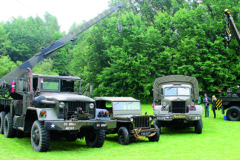Ex-army Foden recovery vehicle

Posted by Chris Graham on 19th September 2021
Bob Weir meets a commercial vehicle enthusiast with a particular interest in ex-army Foden recovery vehicles, winches and cranes.

Although the lorry was in a dire state, Roddy has restored it back to factory condition.
Roddy and his brother, William, own Brian Patterson & Sons, a family-run business started by their father. The company has a long and successful history, providing quality crane hire to Perth and the surrounding area.
“My father Brian was born in Scotland and formed the company in 1946 when he left the army,” said Roddy. “Our original yard was in the north-east of England, before the family moved back up to Scotland. We had several depots including one in Aberdeen, but shut them down when Scottish Agricultural Industries (SAI) finally closed.”
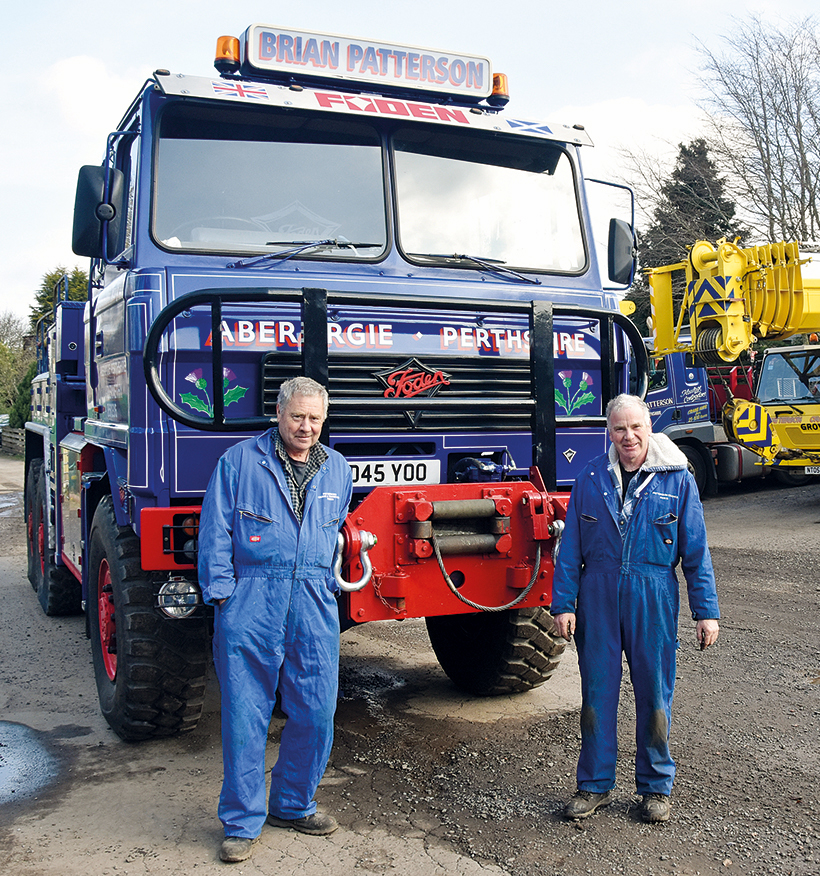
Roddy (left) and William Patterson.
The family’s current yard is at Aberargie, just south of the Tay estuary, and a short distance away from the main M90 motorway. Up until recently, the brothers were still running a small haulage fleet, but their primary business is now crane hire.
“In the old days, we used to have a fleet of 11 vehicles operating out of Aberargie,” Roddy said. “Some of the lorries we were using were Fodens. We now operate seven mobile cranes, and they are available for a variety of jobs.”
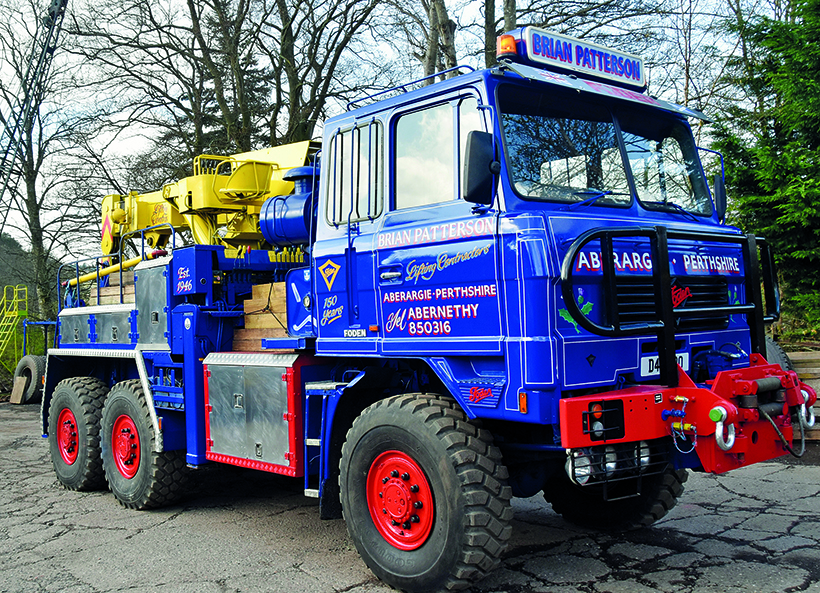
The Foden Recovery Vehicle was originally designed for military use.
When he was a teenager, Roddy served his time working as a mechanic in the merchant navy. During his frequent sabbaticals on shore, he managed to pass his HGV test and learned to operate cranes at a local shipyard. When he eventually decided to quit the sea, he took to driving commercial vehicles. He also spent several years in England, running part of the family’s haulage business. He has always been a big fan of Foden, and his all-time favourite was the 4000 Series.

With a top speed of more than 50mph, the Foden is an impressive beast.
“As far as I was concerned, Foden were the Rolls-Royce of commercial vehicles, and I was disappointed when the company stopped making them,” he explained. “I think it was sad what Paccar did to the brand. I believe it thought that everybody would simply shrug their shoulders and start buying DAFs instead, but it misjudged a lot of its customers. Foden operators tend to be loyal, and many stuck with the marque for many years. Unfortunately, spare parts became increasingly hard to find, and hauliers were forced to switch to other makes, despite their misgivings.”
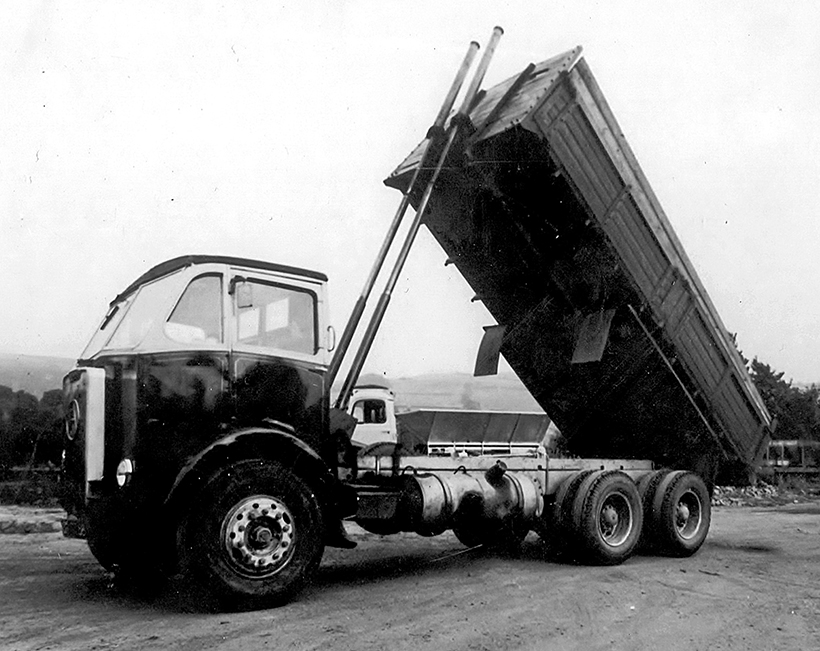
An old B&W Atkinson from the company’s early days.
Roddy also recalls that, back in the old days when the company was still operating out of Aberdeen, his father was fond of Atkinson lorries. “In 1960, we acquired one of the first Atkinsons to be fitted with the new 150 Gardner engine,” he recalls. “It covered over a million miles travelling between our yard in Aberdeen and Bedford, in the south of England, before the engine was replaced with a Gardner 180. It then did another million miles before it was scrapped, in 1980. Unfortunately, the lorry had been hauling industrial acid for most of its working life, and finally succumbed to rust.”
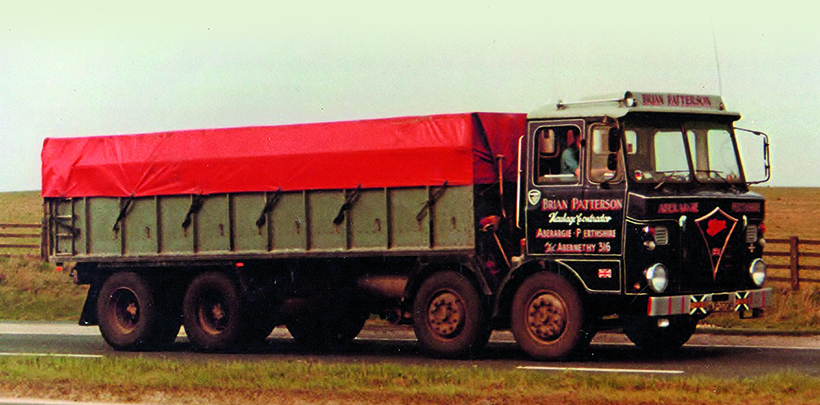
The Patterson’s have been big fans of Foden…
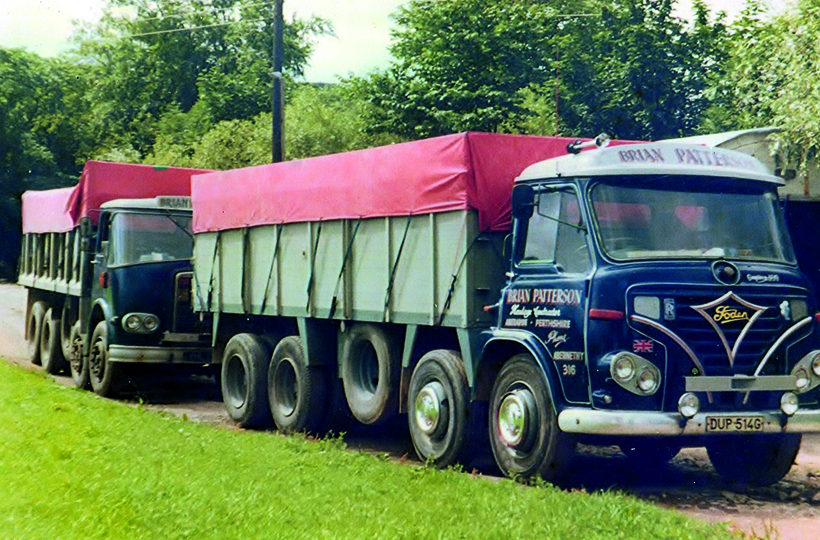
… for many years.
Roddy and William also own an ex-military AEC Militant conversion that’s equipped with a Coles Crane, which was brought as a tribute to Patterson senior when he passed away.
“I think I saw the lorry advertised in Heritage Commercials magazine,” he explained. “I was really looking for either a Foden or Atkinson eight-wheeler, or possibly a Foden with a 22 RB crane on the back, because that’s what my father used to drive. However, mobile cranes in good condition are hard to find, and it was a case of seeing what was available. The advantage of having the crane as compared to a standard commercial, is that the vehicle doesn’t have to be MoT’d and can also run on red diesel. This obviously makes it a lot cheaper to take to rallies and other shows.”
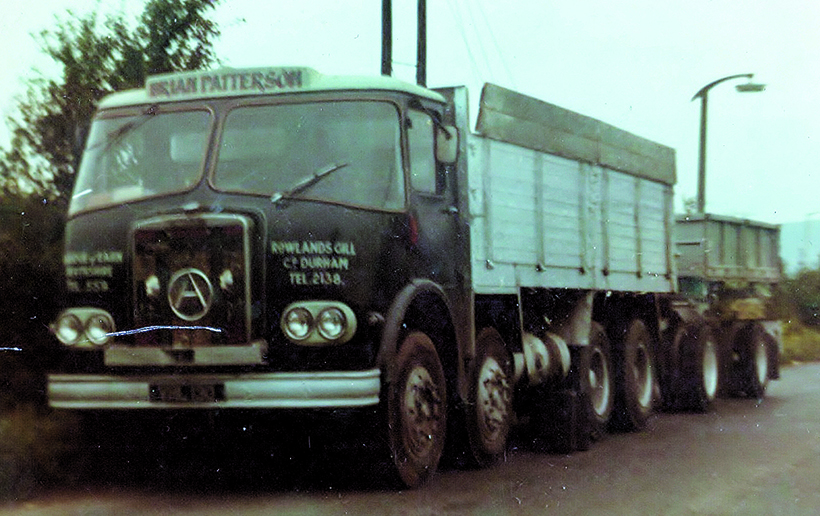
This old ‘Atki’ was with the company for many years, and covered more than two million miles.
Although lorries will always play a major part in Roddy’s life, mobile cranes are now the order of the day. “Cranes are complicated pieces of machinery, and require an experienced operator to man the controls,” he said. “It’s important that any work is carried out in a timely and safe manner. Our fleet of quality, well-maintained cranes and lifting equipment ensures that any job will be completed on schedule, and with no safety issues. Our cranes handle all manner of jobs, including building, tree removal and site maintenance, placing pre-fabricated bridges and building panels.”
Roddy has also been called out on some unusual jobs, and recently received a request from Edinburgh Zoo. “One day we got this phone call out of the blue,” he explained. “The caller said that the zoo wanted us to move a rhinoceros. To begin with I thought it was a wind-up, but the job turned out to be genuine. Edinburgh Zoo is world famous, but it’s close to the city centre and a bit on the small side. When animals reach a certain size, they outgrow their pens, and must be moved on. The rhino had been sold to a zoo in Turkey. Flying the animal by air was considered too dangerous, so it had to be transported by road.

The rhino’s crate is readied for the lift…
“When we arrived at the zoo, a lorry wearing Turkish number plates was parked and waiting for its unusual cargo. Our job was to lift the three-ton rhino and its crate, onto the lorry. The total weight was five tons. Edinburgh zoo is situated on a hill, and I remember it was a tight squeeze getting the crane up the drive. We had to use a side entrance, which is normally closed to the public. At the zoo’s request, we’d already delivered the crate next to the rhino’s compound three weeks before the lift, so the animal could get used to it. That said, you could tell it wasn’t happy. There were lots of people hanging around, and it was making the rhino a bit apprehensive.
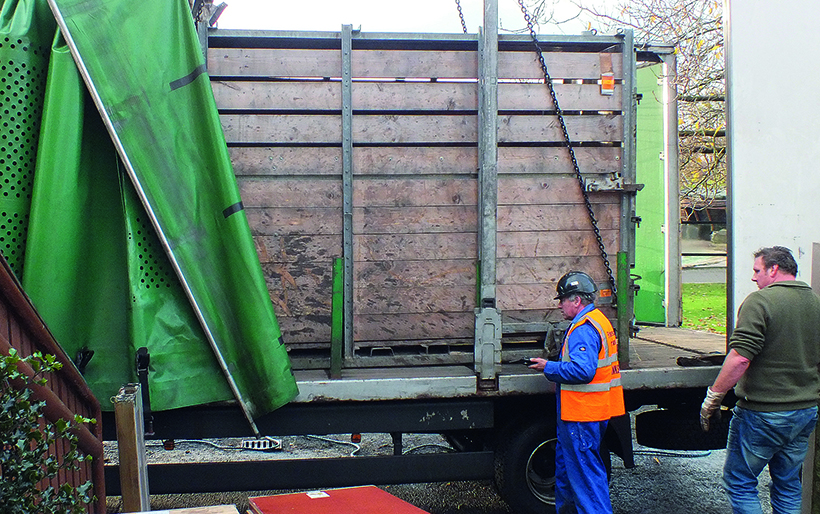
… and lowered down safely onto the Turkish lorry. Mission accomplished!
“Once the animal had been persuaded to enter the crate, we started the lift. I was being as gentle as possible, but the rhino could obviously see out between the wooden slats. When I lifted the load up to the maximum height of 20 feet, it went berserk! The crane started bouncing around with the commotion, so I whipped the crate round quick as I could before setting it down on the lorry. The rhino eventually calmed down, and the Turkish driver went on his way.”
Roddy’s most recent acquisition is the Foden 6×6 heavy recovery, which started life in the Army. “I bought the lorry in 2012, from a recovery specialist – David Cosby – down in Boston,” he recalls. “The vehicle’s military history is a bit of a blank. The gauges were all faded with the sun, and I remember thinking this lorry has served in a hot climate. There were also a lot of Canadian flag stickers on the window, but I’m not sure if this has any relevance. One thing I do know is that the lorry was in a rough shape.”
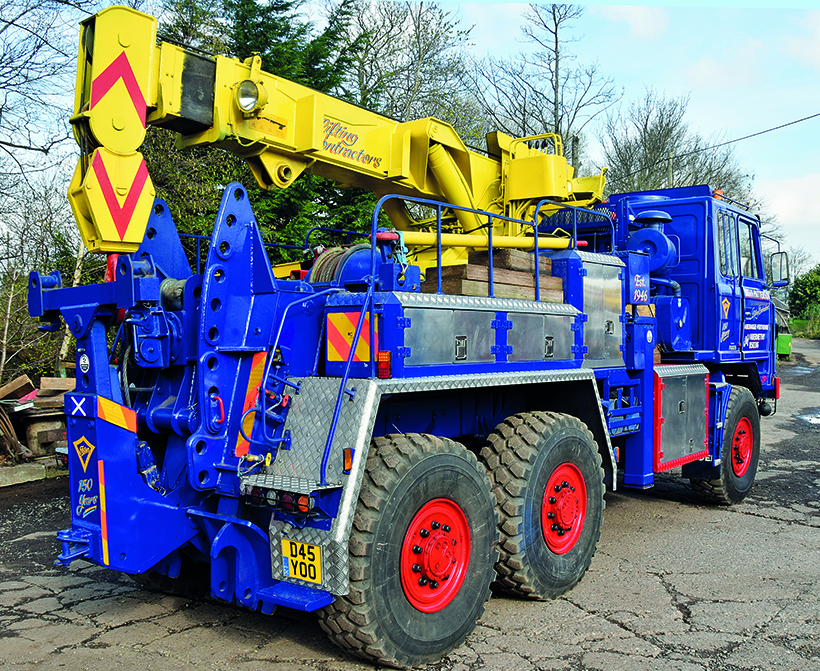
The crane is heavy-duty, and has handled containers weighing more than 12 tonnes.
This came as a surprise to Roddy. Vehicles that have spent time in the military usually have excellent service records, and go through the auction in good condition. “A lot of things were being held on with duct tape, and the body was pretty battered,” he said. “I decided to give the lorry a full bottom-up restoration, and this took about two years.”
The British Army received a total of 333 Foden Recovery Vehicles during its military career, and the last examples were delivered in 2002. Many of these lorries served overseas in Bosnia, and the Persian Gulf. By 2007, a total of 332 lorries remained in service but, the following year, they began to be replaced by a similar vehicle based on the 8×8 MAN SX45.
The Foden RV shared many components with the Foden 6×6 artillery tractor, which has also been phased out of service. The lorry was primarily used to support a fleet of wheeled, logistics vehicles, and was designed to recover damaged and immobilized units.

A neat and functional dashboard, or instrument panel, if you prefer.
The recovery vehicle was fitted with a hydraulically-operated winch and crane designed to be used in conjunction with outriggers. The Foden could tackle every type of vehicle in the British Army, including tracked units with a maximum weight of up to 30,000kg.
A slewing crane could also be used for specialist lifting jobs, and suspended tows. This had a maximum lift capacity of 12.5t at 2.5m, and 5.8t capacities at 7.7m. The two outriggers are lowered to the ground on each side for vehicle stability, during craning and winching operations.
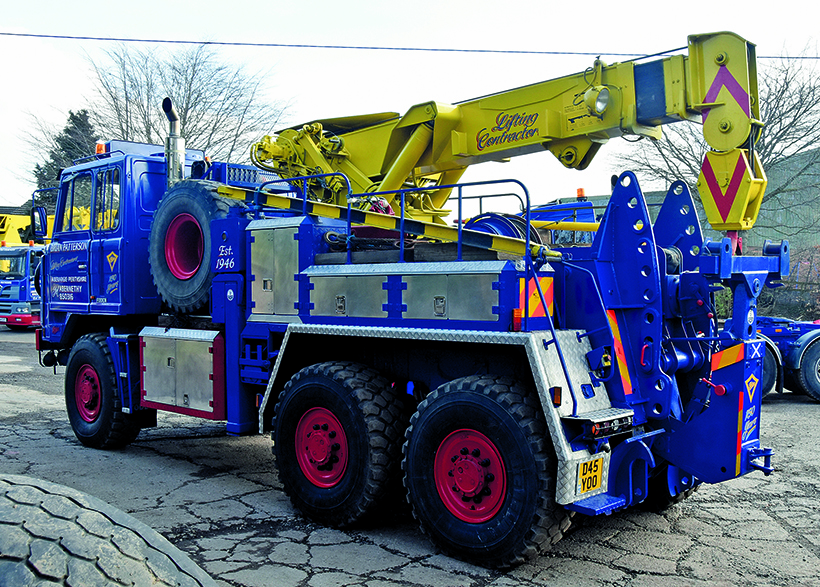
A different view of the heavy-duty crane.
Recovery and lifting operations using the Atlas crane could be remotely-controlled from the Foden, using a special console equipped with 30 metres of cable. The lorry also towed a recovery trailer, which was used to transport damaged and disabled vehicles.
The Foden’s cab could seat a driver, and up to three passengers. The rear seats were also capable of being transformed into a sleeper bunk for two people. The cab was made of glass-reinforced plastic, which is non-corrosive and fire-resistant. There was also an observation hatch in the roof that was fitted with a machine gun mount. Some cabs were fitted with an armour kit, for service in Iraq.
Roddy remembers that the Foden’s cab took a long time to restore. “It was in such a state, it looked like it had been dropped out of an aeroplane,” he recalls. “There were weld breaks on the doors, which were also heavily scored. Mechanically, there were bolts missing out of the prop shafts. The lorry had also been running around using windscreen wipers with no rubbers, so I ended up having to replace the windows. Fortunately, most of the essential equipment was still working. One thing that did surprise me was that there was no evidence of rust. That army green paint certainly does a good job of protecting vehicles.”
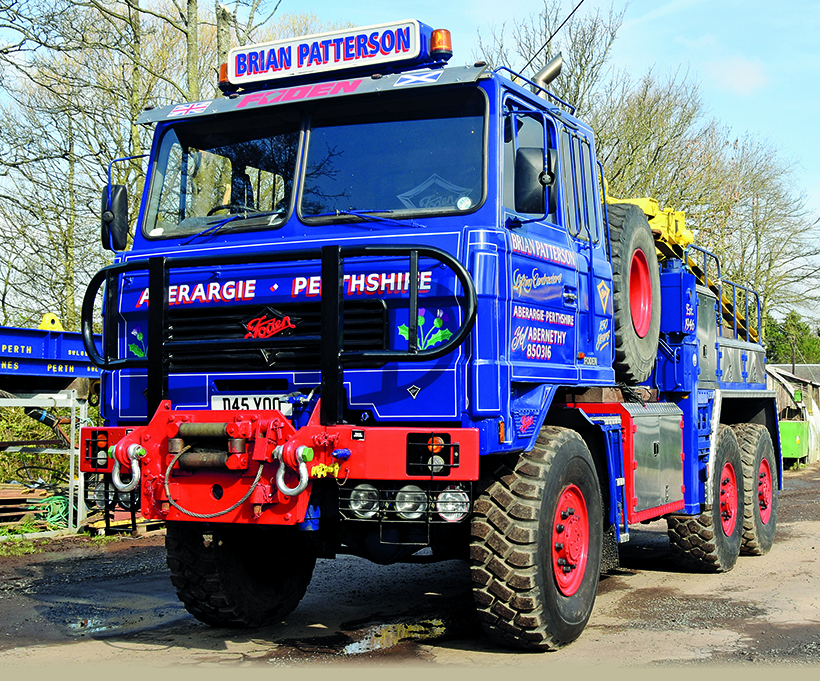
The Foden looks a stunner; even more so in this light.
Both Roddy and his brother Willie are very experienced mechanics, having been brought up with tools from an early age. Fortunately, the yard at Aberargie also has plenty of space, as well as good workshop facilities. This meant they were able to carry out all the repair work themselves, in their spare time.
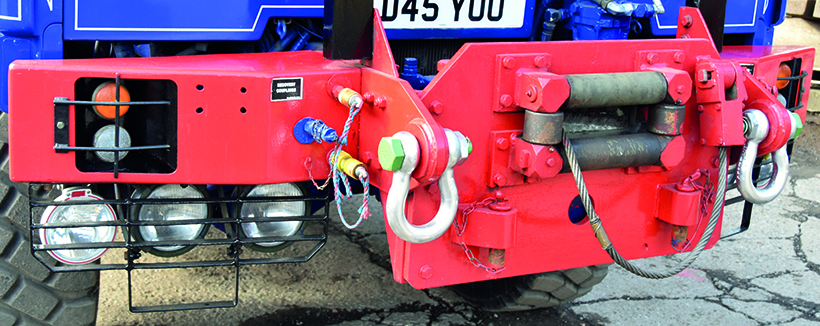
The Fairey Wharton 10-ton recovery winch.
“Now that the vehicle’s up and running again, we still use it for the occasional job,” he explained. “I was down in Edinburgh recently helping a friend move some cabins and 20ft containers, which were stuck on a site. There was no proper access road, and the ground was waterlogged. A 4WD tractor and JCB had already got stuck. By contrast, the Foden took everything in its stride, without having to use the diff lock. Some of these containers weighed more than 12 tonnes, so this was no mean achievement.”
For a money-saving subscription to Heritage Commercials magazine, simply click here



